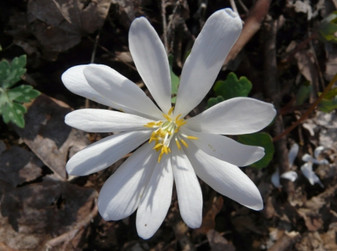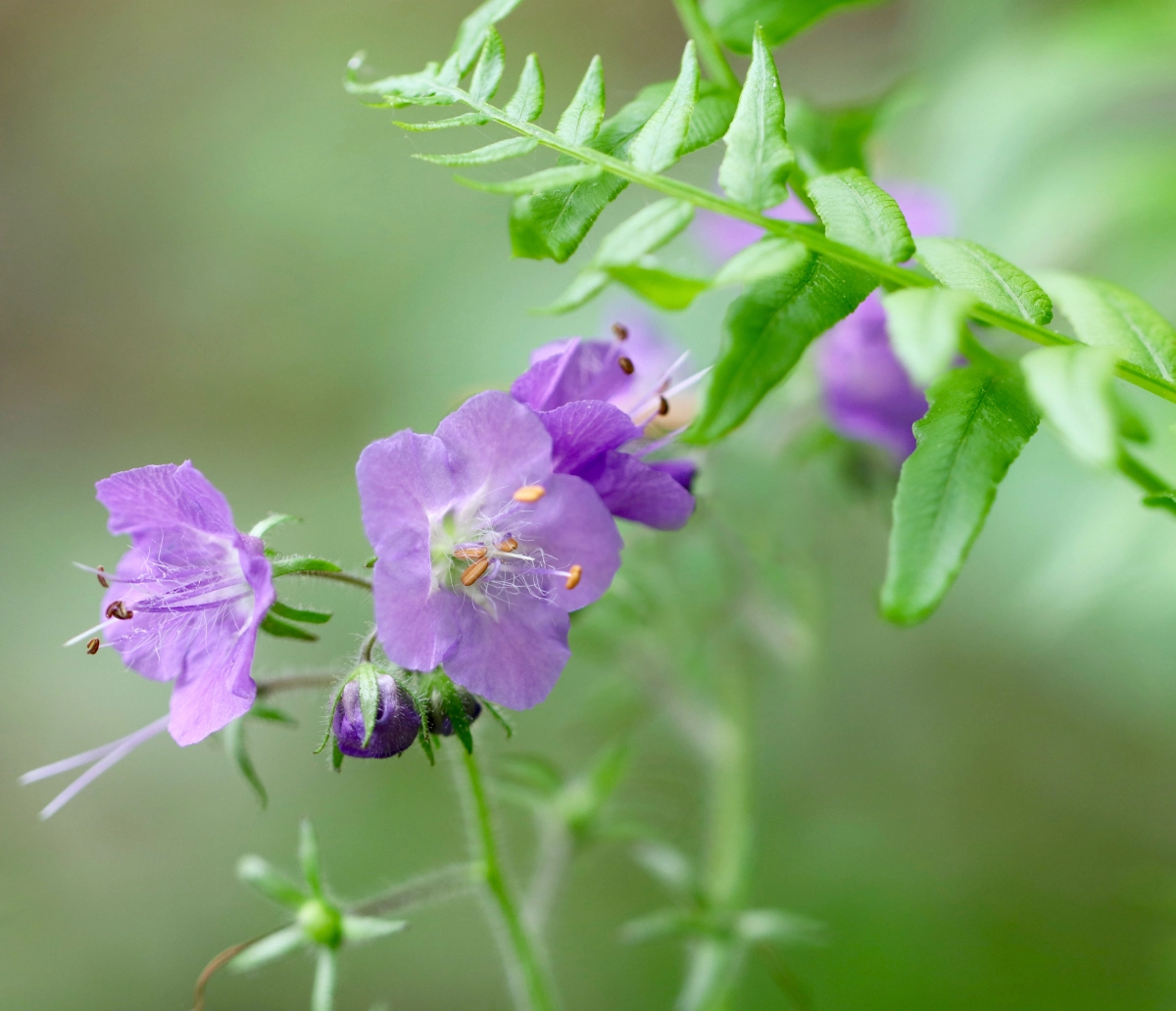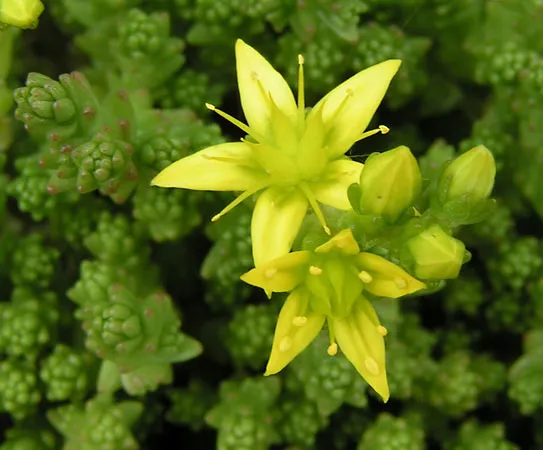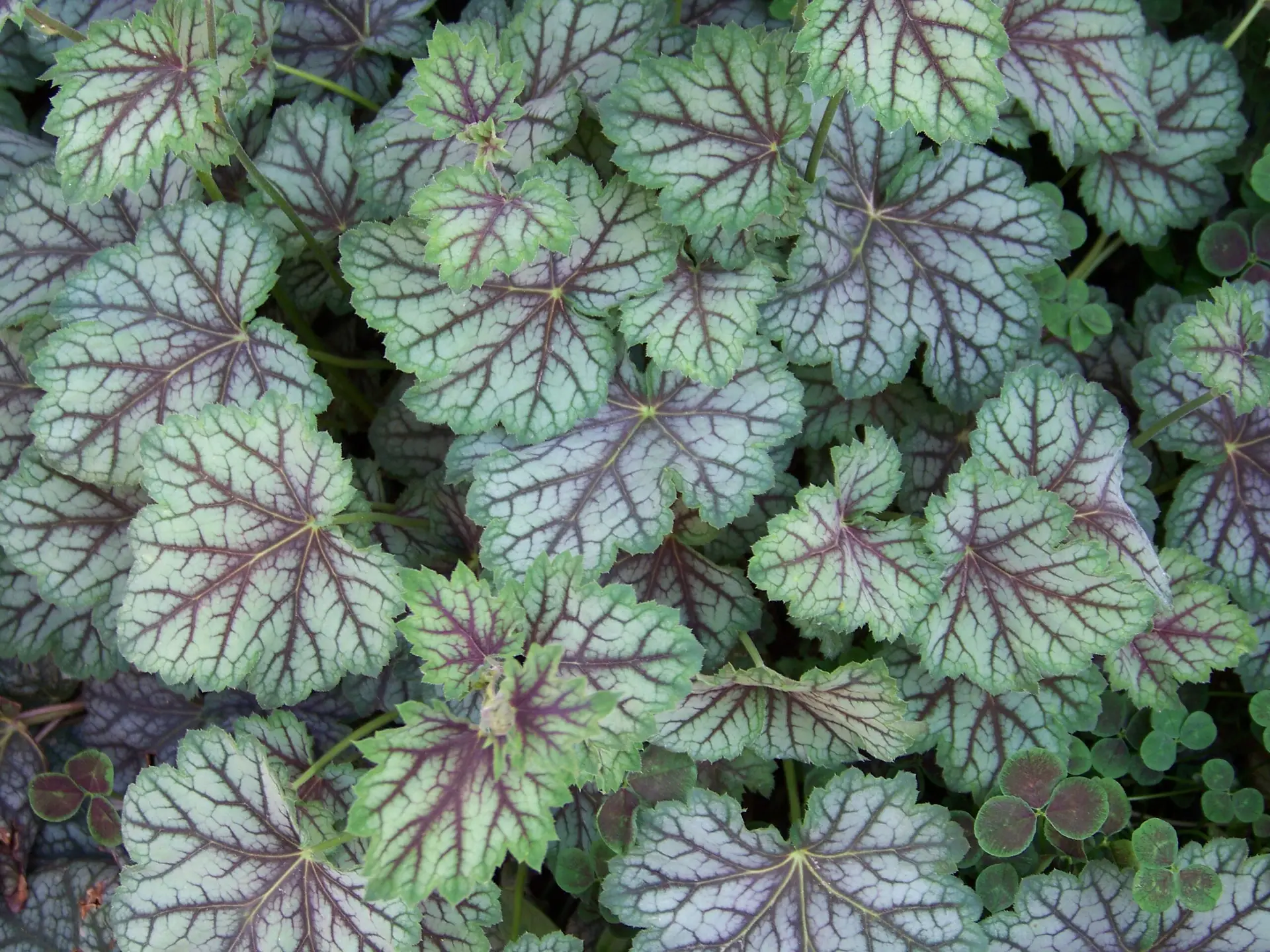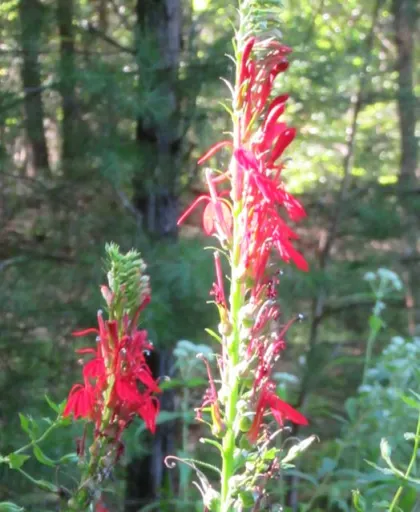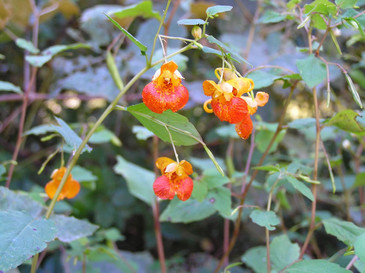
Wildflowers Everywhere You Look
"One rule of general application in the appreciation of nature is especially true when applied to wildflowers: the closer you look, the more beauty you will find." - Under the Sun at Sewanee, 1967
The following is an excerpt from the book Under the Sun in Sewanee, edited by Mary Priestley.
Wildflowers come in a myriad of colors and designs that intrigue and delight us. Each flower's form has everything to do with the millions of years of interactions with its habitat and with the other plants and animals with which it has coexisted. It's enjoyable to explore the details of these remarkable creations and try to unravel their secrets.
The “Domain” of the University of the South in Sewanee is home to a rich diversity of plant life. The vast majority of these plants are herbaceous -- ferns and wildflowers, grasses and sedges, spread across the plateau and spilling into the coves, everywhere there is sunshine. When in search of wildflowers on the Domain, here are some places that we visit.
Moist Coves
Every spring, just when we begin to wonder if the winter will ever end, someone suggests a hike through Shakerag Hollow, a north-facing cove located below Green's View. A 1.5-mile stretch of the Perimeter Trail runs through the hollow, accessible at Green's View and at the University Gates. If it's mid-March, chances are we'll see Harbinger-of-Spring, Star Chickweed, and an early Hepatica. Soon, Bloodroot pops up, and we spot the first leaves of Dutchman's Breeches and Trout Lily. Spring Beauty is everywhere.
From early Spring through mid-May, every week brings beautiful new discoveries: Little Sweet Betsy is the first Trillium to appear, followed by an abundance of Great White Trillium and a scattering of Southern Red. Suddenly we can't keep up with the number and variety of flowers coming into bloom. Phlox and Geranium, Foamflower and Saxifrage, Solomon's Seal and its look-alike Solomon's Plume. Mayapple's parasols poke through the earth, followed closely by Bellwort, Fairy Bells, and the elusive Spotted Mandarin. And the violets: Halberd-leaved is first to bloom. Soon Sweet Yellow, Long-spurred, and Canada crowd the woodland path. The golden Celandine Poppy grows side-by-side with purple Larkspur. Down on our knees, we spy the shy flowers of Wild Ginger and Little-Brown-Jugs.
When Jack-in-the-Pulpit finally appears, the Blue Cohosh is knee high and Doll's Eyes even higher. Mayapple is in full bloom and the Trilliums' seeds are ripening. Toothworts, Dutchman's Breeches, and Trout Lily have gone to seed, their vegetation vanished.
The delicate wildflowers crowd the trunks of magnificent old trees. The rugged sandstone boulders are festooned with Purple Phacelia, Stonecrop, and an array of other colorful beauties. Altogether, a visit to Shakerag Hollow is a springtime imperative for those who love these beauties.
All of these plants are out to attract bees, flies, and butterflies for pollination. Bees are by far the main pollinators. Queen bumblebees, gravid with eggs, are the slow, heavy ones. The pollen that they gather from early woodland wildflowers will nourish the larvae that will later be instrumental in pollinating our crops.
For now the wildflowers avoid— even try to impede — the nectar-loving crawling insects because they are inefficient pollinators. Many plants have developed sticky or matted hairs on their stems as obstacles for these unwanted crawlers. Later, however, they'll try to entice the ants to disperse their seeds by attaching a protein-rich elaiosome to each seed. Trilliums and others will bend down to the ground, offering their seeds to the ants, who will carry them back to their nests to feed the elaiosomes to developing larvae, thereby scattering and planting the seeds.
Depending on animals for pollination — especially in the early spring — is risky business. March and April bring plenty of days when the pollinators just aren't out. Maybe it's cold or rainy or simply too early for emerging insects. So some spring wildflowers, including Trout Lily and Bloodroot, can self-pollinate. And for several species, producing clones — genetically identical groups of plants — is a strategy. The most obvious clones here are the big patches of Mayapple. We also identify sweeps of Trout Lily and clumps of Dutchman's Breeches and Blue Cohosh.
Sandstone Outcrops
It's easy to see the challenges facing a herbaceous plant in some of the hottest, driest habitats on the plateau. Here, where the soil collects only in cracks and depressions in the rock, we find some of the Domain's most interesting — and rare — plants.
The Piney Point area offers the opportunity to see Elf Orpine, a winter annual whose seeds germinate in the fall. The tiny red-leaved seedlings are visible all winter, resembling pink fuzz in puddles of sand on the rock. Come spring, they bolt to the grand height of four inches, flower, go to seed, and die before the rock surface becomes too hot and dry for anything except the dormant seed.
Elf Orpine is one of the few plants in our flora that is pollinated by ants. For most plants, nectar-loving crawling insects are inconvenient nectar thieves. Not so for Elf Orpine, whose short stature and tiny flowers are just the right size for these earth-bound pollinators.
Early May is the time to find Pink Lady's-slippers in bloom. We seek them out beneath the pines, such as those in Louisiana Circle on campus, and often near rock outcrops such as those near Piney Point.
Bluffs and Cliffs
In mid-May, we might amble out to the Piney Point overlook to admire the display of Mountain Laurel. We can also follow the staircase down the cliffside Morgan's Steep to find Catchfly, Mountain Hydrangea, Mountain Spleenwort fern, Alumroot and Dwarf Crested Iris.
Plateau Wetlands
Wherever there is water, we find interesting plants. Streams, maple-black gum swamps, and vernal pools are natural wetlands scattered across the plateau. We follow the path made by those in the know to one of the loveliest such pools, located not far from the main trails in the Piney Point area.
The Domain's reservoirs offer additional wetland habitats. The edge of Lakes Cheston is rich in ferns and wildflowers. Some of the brightest colors in our late-summer flora are here. Cardinal Flower is brilliant red; Yellow-Fringed Orchid the color of ripe cantaloupe; and Soapwort Gentian the bluest blue. Cattails, although not colorful, are striking members of this flora, along with a raft of rushes and sedges. Watershield, Marsh Mermaid-weed, and the carnivorous Bladderwort are among the aquatic plants.
Jewelweed is one of the few annuals among our native wildflowers. Designed for pollination by hummingbirds and long-tongued insects, this dangly gem produces nectar in its spur. The fruit is spring-loaded. When triggered, the mature seed pod flings seeds up to four feet from the parent plant, earning the common name Touch-me-not.
The consummate hummingbird flower, though, may be Cardinal Flower. Hummers go for red flowers, and anyone with a hummingbird feeder knows they are eager for nectar. Cardinal Flower has both. Hummingbirds seem not to notice being tapped on the forehead by pollen-bearing stamens and receptive stigmas, thus completing pollination while they take a sip.
State Parks
Other good places to find wildflowers on the plateau are Fiery Gizzard and Savage Gulf State Parks. In the spring, Collins Gulf is the place to go. In late summer, the powerline vista above Foster Falls is where we head. To learn more about the wildflowers of Sewanee and environs, good books to start with are Wildflowers of Tennessee, the Ohio Valley, and the Southern Appalachians (Horn et al, 2005), The Secrets of Wildflowers (Sanders, 2003), and Sewanee Wildflowers in Watercolor (Priestley, 2018).
Mary Priestley is editor and illustrator of the Friends of the Herbarium’s newsletter, The Sewanee Plant Press. Active in the Tennessee Native Plant Society, she has served as the society’s president and assisted in writing and editing the TNPS field guide,Wildflowers of Tennessee, the Ohio Valley, and the Southern Appalachians. In 2011 she authored William’s Wildflowers, a guide to wildflowers of the Southern Appalachians. In 2014, she published Fiery Gizzard: Voices From the Wilderness. Mary is leader and accordion player for the Bazzania Girls’ Band.






